Indoor plants have become an essential part of modern interior decor. Not only do they add colour and vibrancy to any room, but they also bring a touch of nature into urban homes, especially for those without access to outdoor spaces. Incorporating plants can transform your space, offering both aesthetic appeal and tangible health benefits.
Why choose indoor plants?
Bringing plants indoors has various advantages:
- Improved air quality: Many plants act as natural air purifiers, absorbing toxins and releasing fresh oxygen.
- Stress reduction: Indoor greenery is known to have calming effects, reducing stress and improving mental clarity.
- Enhanced aesthetics: Plants add warmth, colour, and style to any room.
- Boosted well-being: Studies show that being around plants can elevate mood and promote a sense of well-being.
Tips for choosing indoor plants
Not every plant is suitable for indoors or beginners. Here are some factors to consider:
- Light: Most indoor plants prefer indirect or low light; others thrive in moderate or bright conditions.
- Water: Choose plants that don’t require constant watering.
- Space: Small spaces benefit from compact plants, while larger plants work well in open areas.
- Maintenance: For beginners, opt for low-maintenance plants that can handle some neglect.
Essential plant care tips for beginners
Most indoor plants require three primary things: light, water, and well-draining soil. Here are basic care tips:
- Light: Place plants in indirect sunlight or near windows.
- Water: Allow soil to dry between waterings to avoid root rot.
- Humidity: Increase humidity for tropical plants by misting or using a tray with water and pebbles.
- Temperature: Keep plants in stable temperatures away from drafts or direct heat sources.
Top indoor plants for beginners
Snake Plant (Sansevieria Trifasciata)
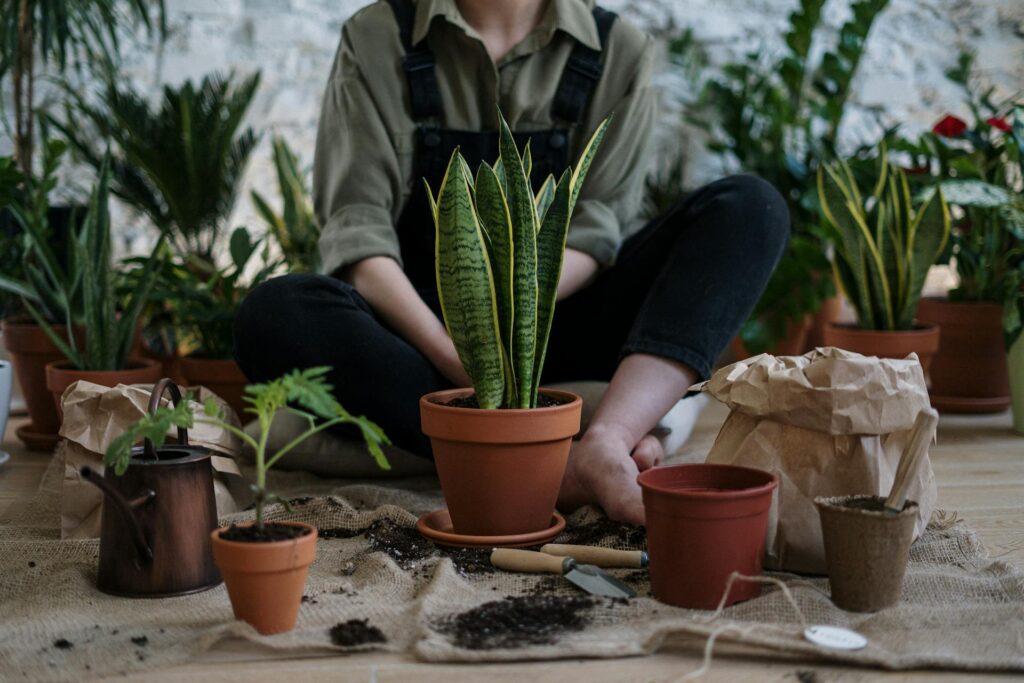
The Snake Plant, also called Mother-in-law’s Tongue, is famous for its incredible durability and ability to thrive under neglect, making it an ideal choice for beginners and those with hectic schedules. This plant has long, sword-shaped leaves with variegated green patterns, adding a striking vertical element to any room.
One of the best features of the Snake Plant is its air-purifying abilities. The Snake Plant is known for filtering out toxins such as formaldehyde, benzene, and trichloroethylene from indoor air, which can improve air quality and potentially reduce airborne allergens. This plant can survive with minimal light, although it also tolerates bright, indirect light and occasional direct sunlight. In terms of watering, the Snake Plant is highly drought-resistant and only needs to be watered when the soil is completely dry—usually every two to three weeks. Overwatering can cause root rot, so it’s best to err on the side of caution.
Ideal Placement: Bedrooms and offices, as it releases oxygen even at night, helping to improve air quality while you sleep.
Pothos (Epipremnum Aureum)
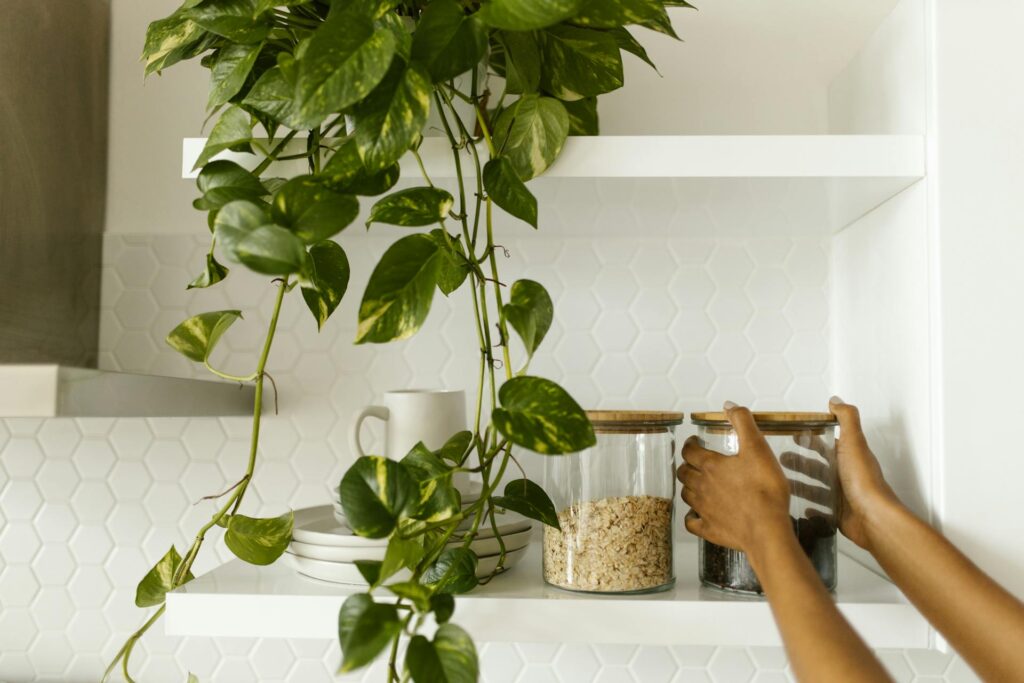
Pothos, often referred to as the Devil’s Ivy, is a low-maintenance, adaptable plant with cascading vines and vibrant, heart-shaped leaves that vary in colour from deep green to variegated shades of yellow and white. Its forgiving nature makes it highly popular among beginners and urban dwellers who may have limited sunlight in their homes.
Pothos is versatile in its light requirements and can thrive in low to moderate indirect light. In lower light, Pothos may grow slower and its variegation might fade slightly, but it will remain healthy. This plant requires minimal watering—usually once every one to two weeks—allowing the top inch of soil to dry out between waterings. Known as a natural air purifier, Pothos helps remove airborne toxins, promoting a healthier living environment.
Ideal Placement: High shelves or hanging planters, where its vines can trail elegantly, bringing a pop of green to any room.
ZZ Plant (Zamioculcas Zamiifolia)
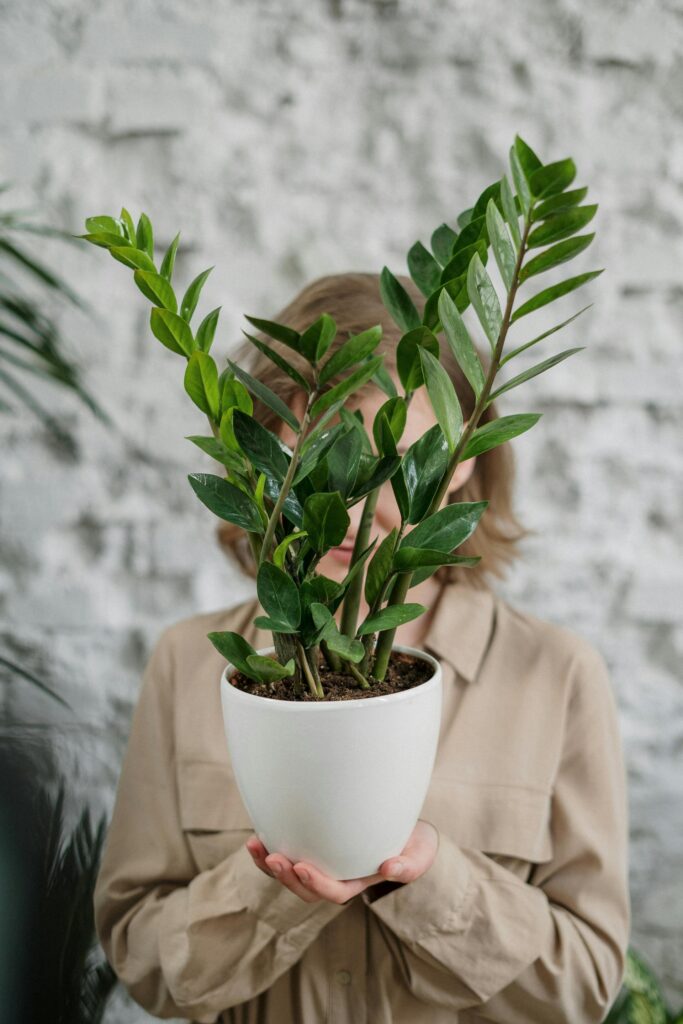
The ZZ Plant, or Zanzibar Gem, is a favourite for its low-maintenance care and ability to withstand low-light conditions. Its dark green, glossy leaves add a touch of exotic elegance to indoor spaces, making it an excellent choice for offices, entryways, and rooms with limited natural light. The ZZ Plant’s thick, waxy leaves are not just attractive but also highly resilient, helping the plant retain moisture during dry periods.
In addition to being easy to care for, the ZZ Plant is tolerant of low light and does best in indirect light, though it can tolerate some direct sunlight as well. Watering needs are minimal; water only when the soil is completely dry, as this plant can go several weeks without water thanks to its moisture-storing rhizomes.
Ideal Placement: Dark corners, hallways, or any spot lacking sufficient sunlight, as it does well in both low and bright indirect light.
Peace Lily (Spathiphyllum)
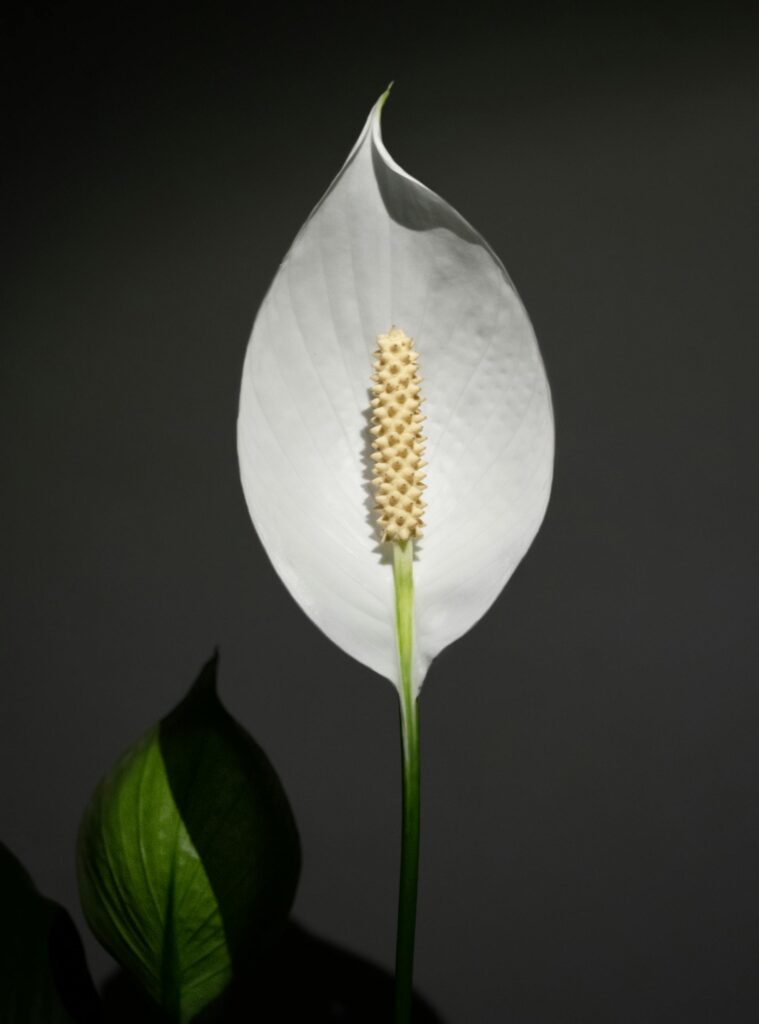
The Peace Lily is known for its serene beauty and air-purifying properties. This popular indoor plant is distinguished by its graceful white flowers and lush, dark green leaves. The Peace Lily is particularly effective at removing airborne toxins such as formaldehyde, benzene, and ammonia, making it a fantastic choice for improving indoor air quality.
The Peace Lily does best in low to medium indirect light. It prefers a consistently moist environment, but avoid overwatering as this can lead to root rot. It may need more water during warmer months and less in the cooler months. One of the Peace Lily’s unique features is its drooping leaves, which serve as a natural signal that it’s time to water. With proper care, Peace Lilies bloom throughout the year, adding a soft, decorative element to any room.
Ideal Placement: Bathrooms, bedrooms, or low-light spaces where its lush leaves and bright blooms will stand out.
Spider Plant (Chlorophytum Comosum)
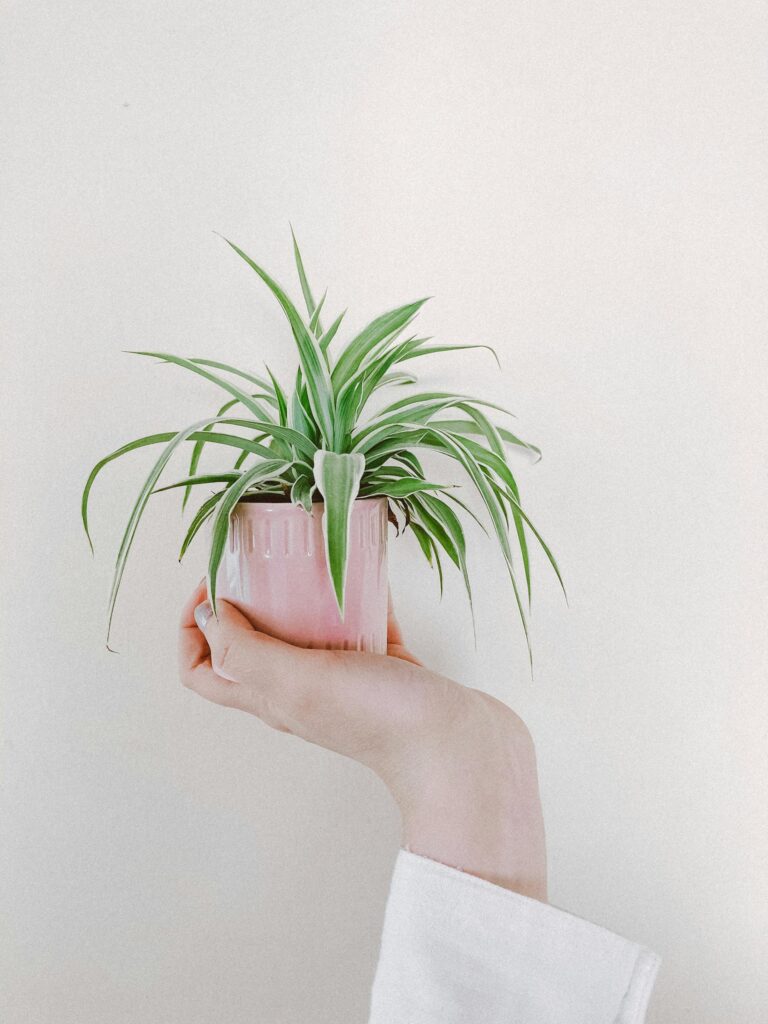
The Spider Plant is a classic houseplant known for its easy care, resilience, and ability to adapt to a range of indoor environments. Characterized by its arched, green-and-white striped leaves, the Spider Plant is a great choice for beginners who want an aesthetically pleasing, low-maintenance plant.
Spider Plants are quite forgiving of lighting conditions; they do best in bright, indirect light but can tolerate low light as well. Watering is straightforward, as they only require moderate watering—once a week or when the soil surface is dry. One of the Spider Plant’s best qualities is its production of “spiderettes,” or small plant offshoots, which can be easily propagated by placing them in water or soil to grow roots.
Ideal Placement: Hanging baskets or elevated shelves, where their long, trailing leaves and spiderettes can be displayed.
Aloe Vera
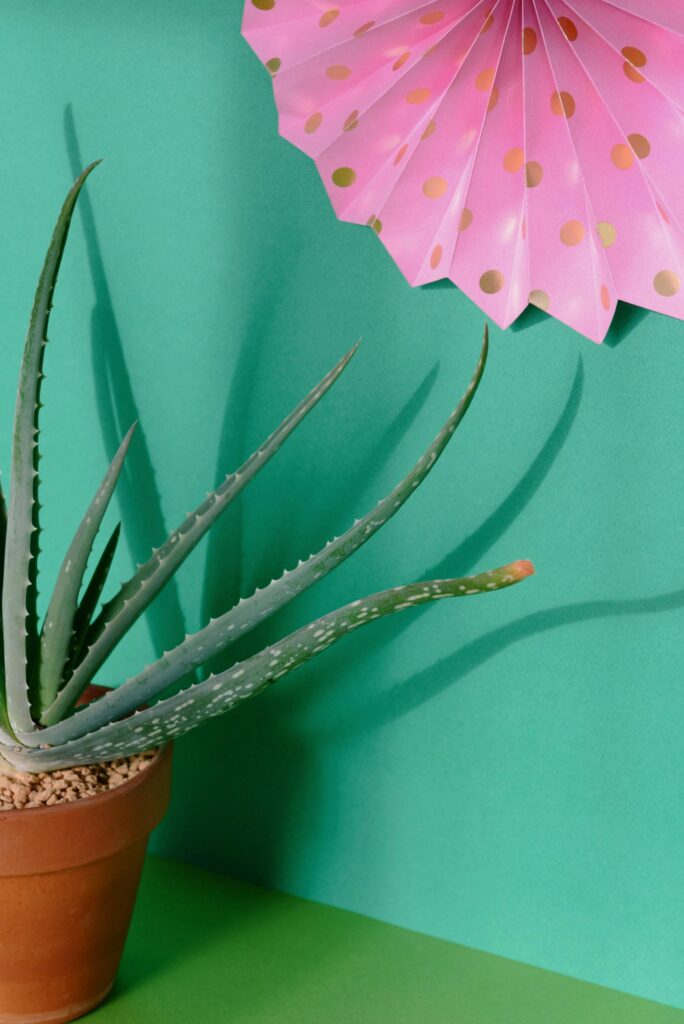
Aloe Vera is not just a stylish plant but a multi-functional one, known for the soothing gel contained within its thick, succulent leaves. This hardy plant is ideal for sunny spots in your home and thrives on minimal care. It’s drought-tolerant, needing watering only when the soil is completely dry, which typically means every two to three weeks, depending on the climate.
Aloe Vera requires bright, indirect sunlight or direct sunlight for a few hours a day, making it perfect for windowsills or well-lit corners. The gel in Aloe Vera leaves is packed with vitamins and minerals, and it’s frequently used to treat skin irritations, burns, and cuts.
Ideal Placement: Kitchen or bathroom windowsills, where its medicinal properties are easy to access and it can enjoy ample sunlight.
Succulents
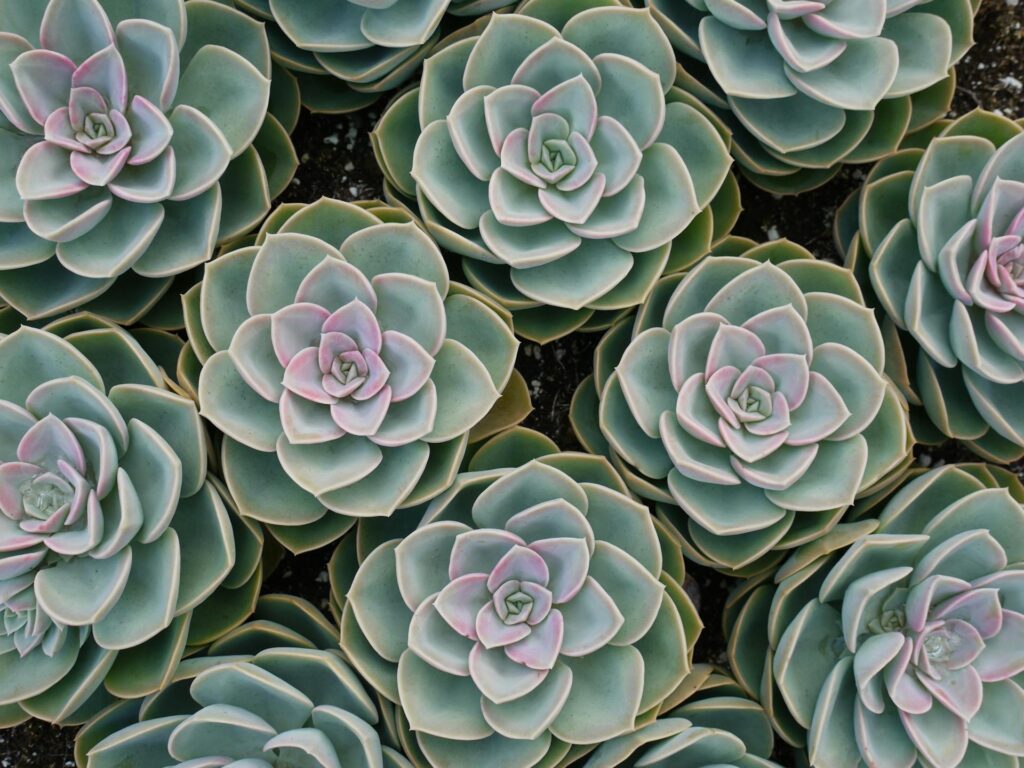
Succulents come in a variety of shapes, sizes, and colours, making them a favourite for indoor plant enthusiasts who enjoy a low-maintenance, versatile plant. Succulents store water in their thick leaves, enabling them to survive with minimal watering, and are perfect for homes or offices with lots of natural light.
Succulents prefer bright, direct light but can adapt to indirect light with a bit of patience. To prevent overwatering, only water succulents once the soil is completely dry—usually every two weeks or even less frequently in cooler months. Succulents are available in many varieties, from the rosette-shaped Echeveria to the cascading String of Pearls, making them suitable for a wide range of interior styles.
Ideal Placement: Windowsills, sunlit tables, or shelves in rooms that receive ample sunlight.
Monstera Deliciosa (Swiss Cheese Plant)
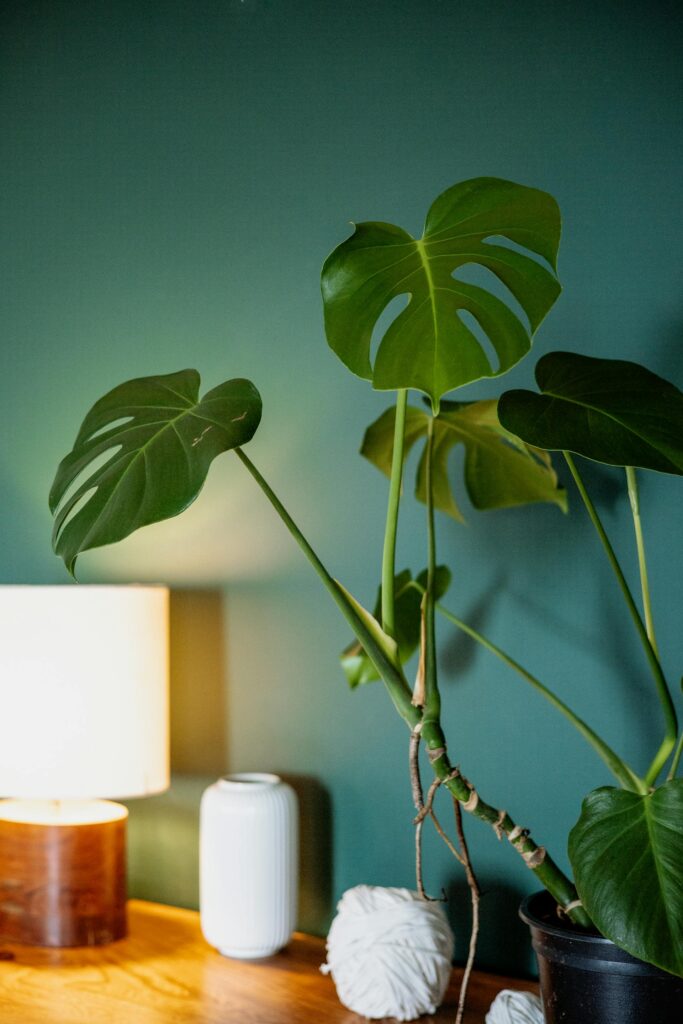
The Monstera Deliciosa, also known as the Swiss Cheese Plant, is recognized for its large, glossy leaves that develop signature splits or “fenestrations” as it matures. This unique foliage gives the Monstera a tropical feel, making it an instant statement piece in any room.
The Monstera thrives in bright, indirect light but can adapt to moderate light settings, making it a versatile choice for indoor spaces. It prefers consistent moisture in the soil but can tolerate occasional drying out between waterings. The Monstera’s large leaves are adept at trapping dust, so occasional leaf-wiping will help it stay healthy and vibrant.
Ideal Placement: Living rooms or open spaces where it can grow and spread, adding a lush, tropical feel to the environment.
Common mistakes to avoid with indoor plants
Even the most resilient indoor plants need some essential care practices. Here are the common mistakes to watch out for:
Overwatering
Overwatering is one of the most frequent causes of plant issues. Indoor plants generally require less water than outdoor ones, as they’re protected from extreme weather conditions. Signs of overwatering include yellowing leaves, mushy stems, and an unpleasant odour from the soil due to root rot. To avoid this, allow the top inch or two of soil to dry out before watering and ensure your plant’s pot has adequate drainage.
Inadequate light
Each plant has specific light requirements, from bright indirect light to low light conditions. A common error is placing a sun-loving plant in a shaded area or a low-light plant in direct sunlight. This mismatch can lead to leggy growth, leaf burn, or fading of the plant’s natural colors. Always assess your room’s lighting throughout the day and position plants accordingly.
Poor drainage
Pots without drainage holes can trap excess water, leading to root rot. Choose pots with drainage holes and use a well-draining soil mix, especially for plants sensitive to moisture, like succulents and cacti. If a decorative pot lacks drainage holes, consider using a liner pot with holes or adding a layer of rocks at the bottom to help with water flow.
Neglecting humidity needs
While many common houseplants are adaptable, tropical plants, such as ferns, Peace Lilies, and Monsteras, often require higher humidity levels than typical indoor environments provide. Low humidity can cause brown leaf tips and crispy edges. To maintain humidity, consider misting, placing plants near a humidifier, or setting pots on a tray filled with water and pebbles.
Using inappropriate soil
Using regular garden soil indoors can lead to drainage issues, compacting, and poor aeration. Indoor plants often need a specialized potting mix that provides the right balance of moisture retention and aeration. For example, cacti and succulents require gritty, fast-draining soil, while ferns and tropical plants do well in a more moisture-retentive blend.
Simple troubleshooting tips for indoor plants
When issues arise, quick troubleshooting can help restore your plants to health:
- Yellowing Leaves: Usually a sign of overwatering, poor drainage, or lack of sunlight. Check soil moisture and adjust the watering frequency.
- Leggy Growth: Stretched, leggy stems often indicate insufficient light. Move the plant to a brighter location or rotate it regularly to promote even growth.
- Browning Leaf Tips: Brown tips can result from inconsistent watering, low humidity, or over-fertilization. Trim affected areas, adjust watering, and mist if necessary.
- Wilting: Wilting can be due to both under and overwatering. Check the soil’s moisture level to determine the cause.
- Slow or No Growth: If a plant isn’t growing, it may need a larger pot, a bit more light, or light fertilizing in spring and summer.
Regularly checking your plants for signs of stress or distress can help you catch and resolve issues early, keeping them healthy and vibrant.
Benefits of adding greenery to your home
Indoor plants offer a host of benefits, extending beyond aesthetics to improve mental and physical well-being:
- Enhanced Air Quality: Many indoor plants, such as the Snake Plant, Peace Lily, and Pothos, can remove toxins from the air, including formaldehyde, benzene, and xylene, promoting a cleaner, healthier environment.
- Stress Reduction: Studies show that plants can reduce stress, lower blood pressure, and create a sense of calm. The presence of greenery has been linked to increased productivity and focus, making plants ideal for home offices or study areas.
- Interior Ambiance: Plants soften interior spaces, bringing natural textures, colours, and a sense of life into any room. They can also improve acoustics by absorbing background noise, making your space feel more serene.
Adding greenery turns your home into a tranquil sanctuary, enhancing relaxation and encouraging a mindful connection to nature.
How to style indoor plants in different rooms
Different plants thrive in different environments, and thoughtful placement can elevate both your decor and your plants’ health.
Living Room
In living rooms with ample space and light, large plants like the Monstera Deliciosa or Fiddle Leaf Fig can serve as stunning focal points. Place them in corners or near windows where they can receive indirect sunlight. Complement them with smaller plants on coffee tables or shelves, like succulents or Pothos, for an added touch of green.
Bedroom
For the bedroom, choose plants known for their air-purifying qualities and low maintenance needs. Snake Plants and Peace Lilies are ideal, as they help filter the air and may improve sleep quality. Place these on bedside tables or in shaded corners for a serene and restful space.
Kitchen
Smaller plants, such as herbs, succulents, or Aloe Vera, are great for kitchens. Herbs like basil, mint, and rosemary thrive in kitchen windowsills with moderate sunlight and are practical for cooking. Aloe Vera is not only visually appealing but can also be used for its healing gel in case of small burns while cooking.
Bathroom
Bathrooms can be excellent environments for humidity-loving plants, such as Ferns, Spider Plants, and Pothos. These plants will thrive in higher moisture levels, especially if they’re positioned near a window for indirect light.
Low-maintenance indoor plants for busy people
If you’re always on the go, consider resilient, low-maintenance plants that thrive with minimal care:
- ZZ Plant: Almost indestructible, ZZ Plants require very little water and can handle low light.
- Snake Plant: A tough plant that can survive both low light and infrequent watering.
- Pothos: This vining plant adapts well to indirect light and tolerates some neglect, making it ideal for busy individuals.
These plants can add a lively touch to your home without demanding too much time or attention.
Pet-friendly indoor plants
Pet owners must be cautious about the plants they bring into their homes, as some species can be toxic to animals. Here are a few safe options:
- Spider Plant: A non-toxic, air-purifying plant that grows quickly and produces baby plants.
- Boston Fern: Another safe choice for pets, the Boston Fern enjoys humid environments, making it ideal for bathrooms.
- Areca Palm: A tropical palm that adds height to a room and is safe for pets, thriving in bright, indirect light.
These pet-friendly plants provide all the benefits of indoor greenery without posing any risk to your furry friends.
Conclusion: choosing the right indoor plants
When selecting indoor plants, consider the light availability, watering needs, and the time you can devote to care. Low-maintenance plants like the Snake Plant, Pothos, ZZ Plant, and Spider Plant are fantastic for beginners. For air purification and elegance, the Peace Lily is an excellent choice. Succulents and Aloe Vera offer visual appeal with minimal watering needs, while the Monstera Deliciosa adds a touch of tropical ambience with its large, split leaves.
Adding greenery enhances your home’s beauty and well-being, fostering a refreshing connection with nature. Whichever plants you choose, they’ll transform your space into a vibrant and welcoming haven.

